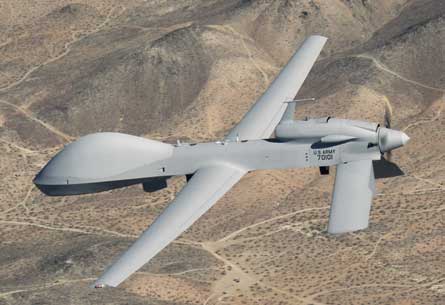Northrop Grumman has scored a significant victory in the small, but rapidly growing market for multi-function radars for unmanned air systems.
The US Army on 28 April awarded Northrop a contract to provide Starlite synthetic aperture radar/ground moving target indicator sensors for its General Atomics Aeronautical Systems MQ-1C Sky Warrior (below) and Northrop MQ-8B Fire Scout air vehicles. The deal completes a planned shift of radar supplier announced by the service last month.
 |
|---|
© General Atomics |
General Atomics was originally selected to deliver its Lynx II SAR/GMTI payload for the Sky Warrior fleet, but the army reopened the competition after encountering “challenges” during system development and demonstration. “We still have not received all the sensors under contract,” says Ted Girouard, an army systems manager for UAS sensors.
Late last month, General Atomics defended the performance of its contract. Linden Blue, president of the company's reconnaissance systems group, said: "Lynx II is an excellent product and meets the SDD radar performance requirements. While we did not meet the original SDD radar programme schedule, we are on time for the aircraft programme schedule, with three radars delivered to date and the balance to be delivered by the end of the month."
Little is known about the heritage or capability of Northrop’s Starlite sensor, which was not publicised by the company prior to the new contract award.
Army officials have now staged re-competitions for two major UAS sensors. The first was for the Sky Warrior's forward-looking infrared sensor, originally awarded to the FLIR Systems Britestar II, but last year swapped to a new version of Raytheon's multi-spectral targeting system, which will also equip the army's Bell Helicopter ARH-70 Arapaho armed reconnaissance helicopters.
Source: Flight International























